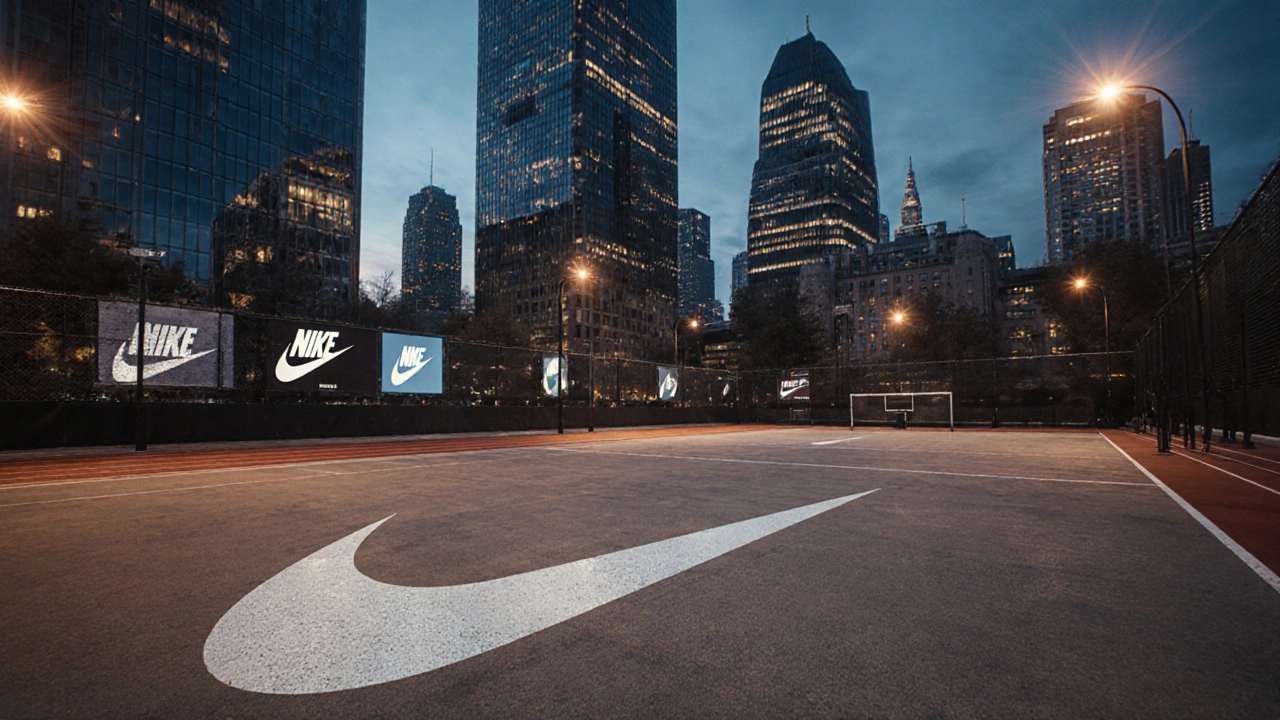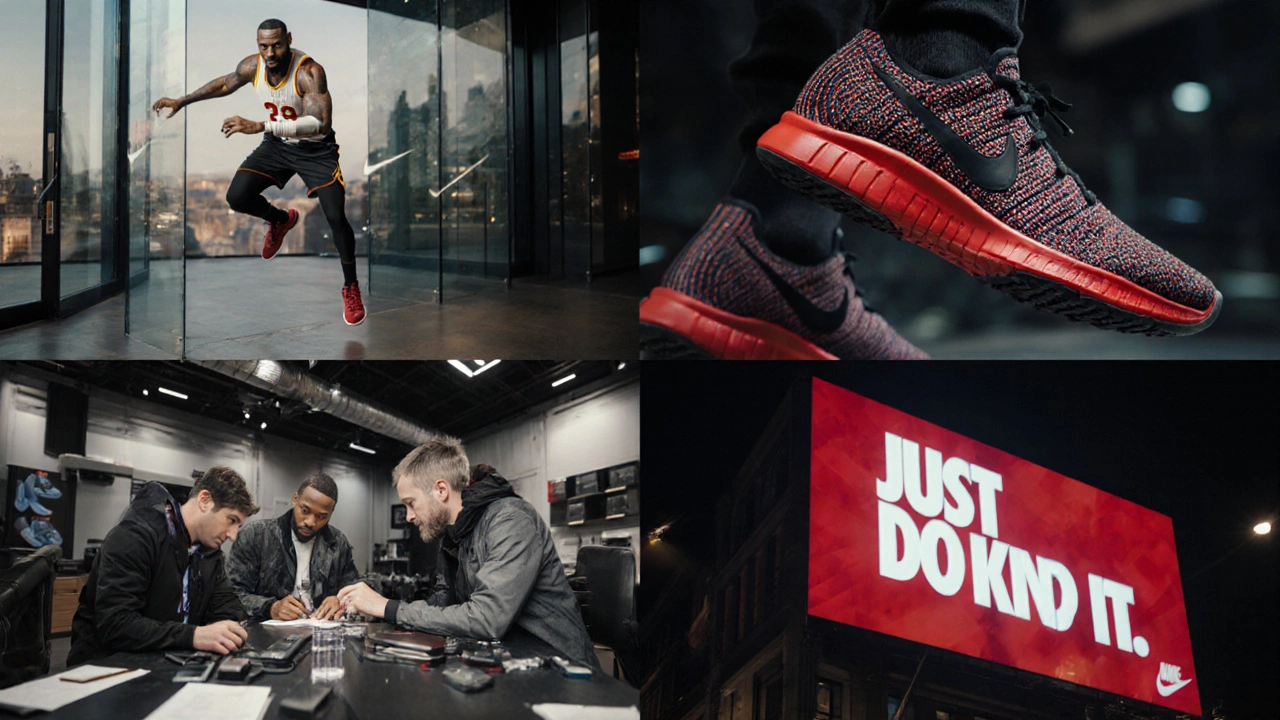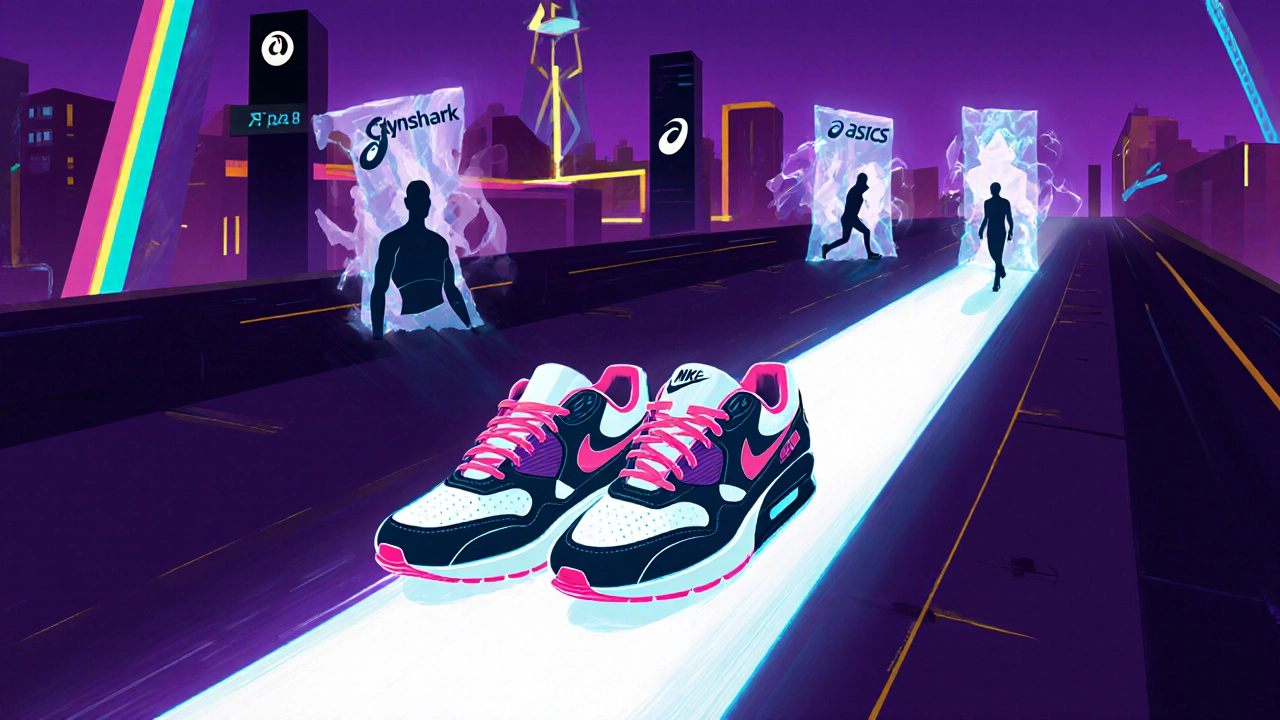What Is the Most Famous Sportswear Brand? An In‑Depth Look

- Cleo Fairchild
- 17 October 2025
- 0 Comments
Sportswear Brand Fame Calculator
How Fame Is Measured
Brand fame is determined by four key factors that you can explore below. Adjust the sliders to see how different brands would rank based on your weighting of these factors.
Revenue shows scale and market dominance. Higher values mean this factor has greater impact on fame ranking.
Distribution across countries shows how widely recognized a brand is worldwide.
Partnerships with artists, athletes, and cultural movements create relevance beyond performance.
Breakthrough technologies and product development keep a brand at the forefront.
When you hear the phrase famous sportswear brand, most people instantly picture a global logo splashed across courts, tracks, and streetwear. The answer isn’t a mystery for many: Nike is a multinational corporation that designs, develops, and sells athletic footwear, apparel, equipment and services. Founded in 1964 as Blue Ribbon Sports and rebranded in 1971, Nike’s Swoosh has become synonymous with performance and style.
Quick Takeaways
- Nike leads the global sportswear market with a 2024 revenue of over $49billion.
- Key competitors include Adidas, Puma, Under Armour, Reebok and New Balance.
- Brand fame is driven by athlete endorsements, product innovation, and cultural relevance.
- Emerging brands such as Gymshark and ASICS are narrowing the gap.
- Understanding market share, heritage, and consumer perception helps you spot the next big name.
What Makes a Sportswear Brand Famous?
A brand’s fame isn’t just about sales volume. It’s a mix of four measurable factors:
- Revenue & market share. Money shows scale, but share tells you how dominant a brand is in its category.
- Global reach. Distribution in >150 countries means the logo is seen everywhere.
- Cultural impact. Partnerships with music, art, or social movements boost relevance beyond the gym.
- Innovation pedigree. Ground‑breaking technologies (e.g., Nike Air, Adidas Boost) keep the brand at the forefront.
When you line up brands against these criteria, Nike consistently tops the list.
Why Nike Dominates the Global Scene
Let’s break down Nike’s advantages using the four factors above.
- Revenue powerhouse. In 2024, Nike reported $49.2billion in revenue, a 7% increase over the previous year. Its net profit margin sits at 12.3%.
- Unmatched distribution. Nike runs more than 1,200 owned retail stores and over 30,000 third‑party outlets worldwide.
- Cultural resonance. Iconic campaigns like "Just Do It" and collaborations with artists such as Travis Scott keep the brand in the pop‑culture conversation.
- Tech leadership. From Flyknit to VaporWave, Nike spends roughly $3.5billion annually on R&D, ensuring a pipeline of performance‑boosting products.
These pillars, supported by a relentless focus on athlete partnerships-think LeBron James, Serena Williams, and Cristiano Ronaldo-fuel the brand’s global fame.

Head‑to‑Head: Nike vs. Other Top Brands
| Brand | Founded | 2024 Revenue (Billions USD) | Global Market Share % | Flagship Innovation |
|---|---|---|---|---|
| Nike | 1971 | 49.2 | 30.6 | Flyknit & Air |
| Adidas | 1949 | 24.5 | 15.4 | Boost & Primeknit |
| Puma | 1948 | 7.1 | 4.5 | IGNITE foam |
| Under Armour | 1996 | 5.9 | 3.8 | HOVR cushioning |
| Reebok | 1958 | 2.3 | 1.5 | Flexweave |
| New Balance | 1906 | 4.5 | 2.9 | Fresh Foam |
The table makes it clear why Nike remains the most famous: it out‑paces rivals on every metric that matters for fame.
How Fame Is Built: Athletes, Tech, and Culture
Three forces keep a sportswear brand in the spotlight.
- Athlete endorsements. When a champion wears a brand, fans associate performance with that logo. Nike’s signature deals-Michael Jordan (Jordan Brand), Lionel Messi (Nike Football), and Naomi Osaka (tennis)-are textbook examples.
- Product breakthroughs. Technology that tangibly improves performance, such as Nike’s React foam or Adidas’s Parley Ocean Plastic shoes, creates buzz and drives sales.
- Street‑level relevance. Collaborations with designers (e.g., Off‑White x Nike) and cultural moments (Music festivals, sneaker drops) transform athletic gear into lifestyle statements.
Brands that ignore any of these pillars quickly fade from the public eye.

Emerging Contenders to Watch
While Nike holds the crown today, a few up‑and‑coming names could shift the landscape in the next five years.
- Gymshark. Started in 2012 as a UK‑based e‑commerce brand, Gymshark reported $1.2billion in revenue in 2024 and leverages influencer marketing heavily.
- ASICS. Known for running shoes, ASICS invested $800million in R&D for its Gel‑technology, gaining traction among marathoners.
- Lululemon. Though primarily an athleisure label, its expansion into high‑performance apparel (e.g., Tenacious Series) shows ambition to compete directly with traditional sportswear giants.
Watch their market share growth, celebrity partnerships, and product innovations-you might see a new "famous sportswear brand" emerging before the next decade ends.
Frequently Asked Questions
Which sportswear brand has the highest global revenue?
Nike leads the world with $49.2billion in revenue for the fiscal year 2024, far ahead of its closest rival, Adidas.
Why do athlete endorsements matter so much?
Fans often emulate their idols. When a top athlete wears a specific brand, it signals quality and performance, boosting consumer trust and sales.
Can a newer brand become as famous as Nike?
Yes, but it requires massive investment in R&D, strategic athlete partnerships, and cultural relevance-traits that Gymshark and Lululemon are already pursuing.
How does sustainability affect brand fame?
Consumers increasingly reward brands that use recycled materials and transparent supply chains. Adidas’ Parley shoes and Nike’s Move to Zero initiative have boosted their public image.
Which brand leads in sneaker technology?
Nike’s Air and React technologies, combined with its patent‑rich cushioning system, are currently considered the most advanced in the market.
In short, Nike stands out as the world's most famous sportswear brand, but the market is dynamic. Keep an eye on revenue trends, cultural beats, and tech breakthroughs to spot the next big name.


